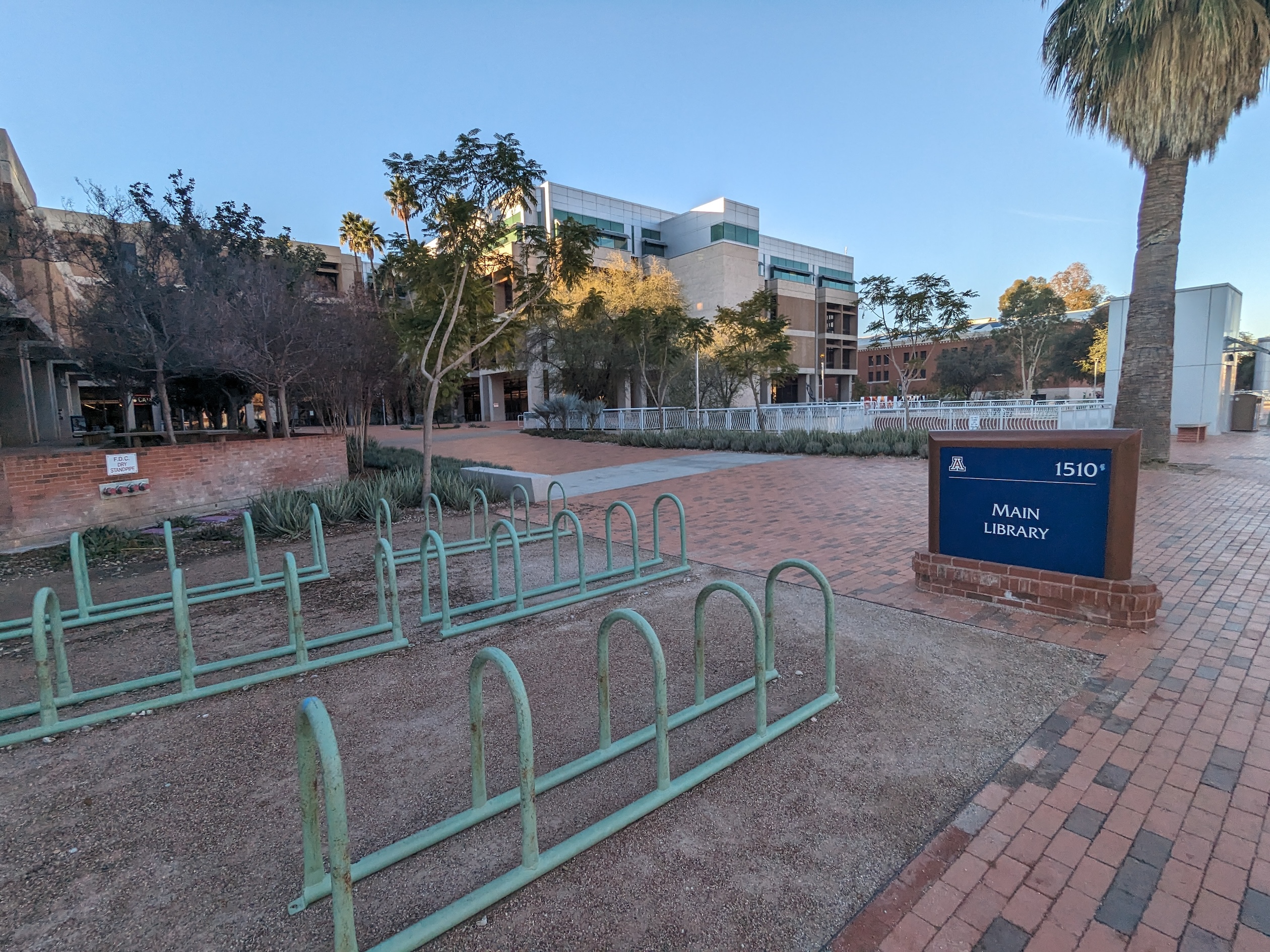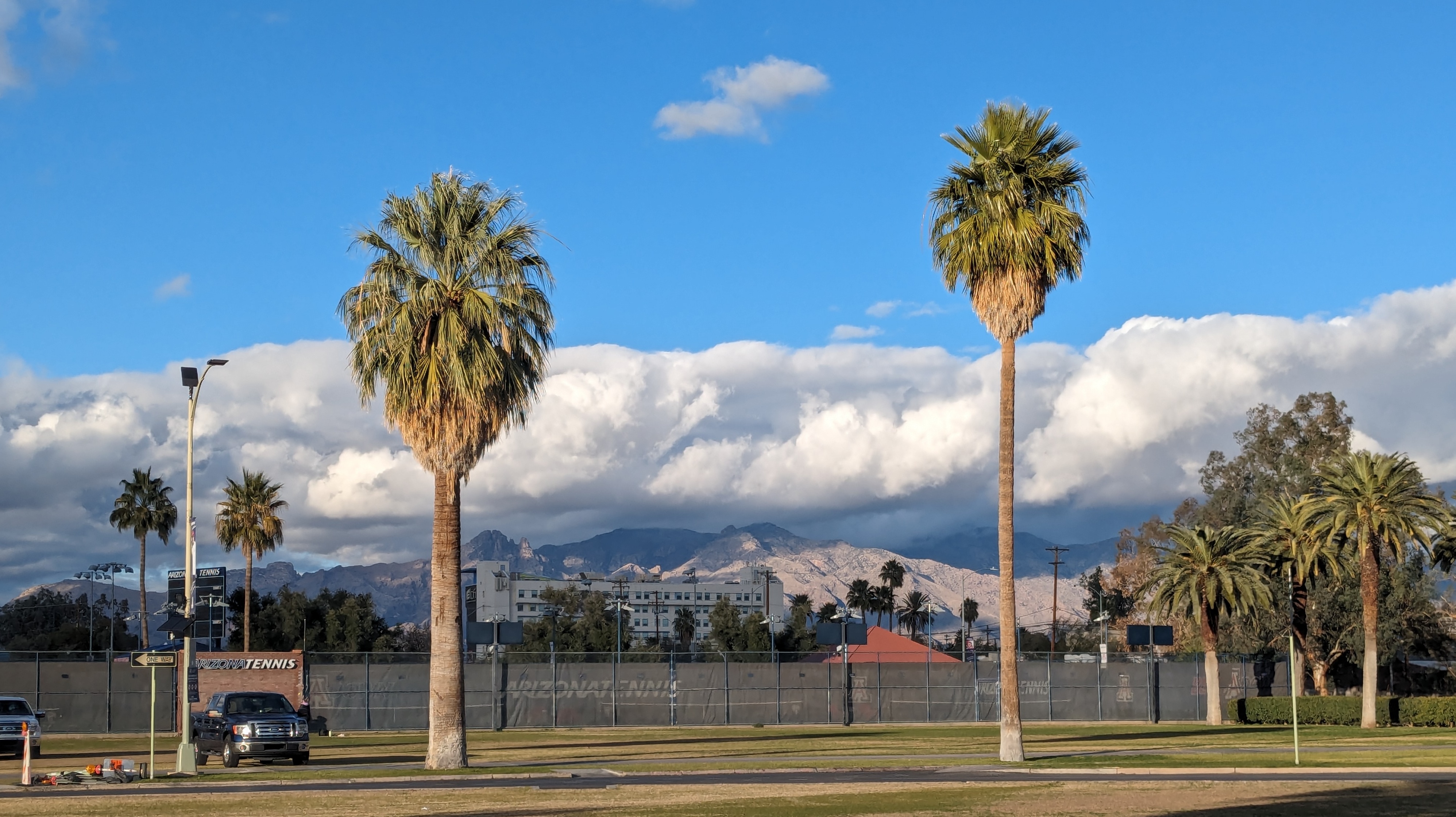By: Ima Oduok, Digital Librarian
What is Digital POWRR anyway?
This was a question posed by a member of the TDL Digital Preservation Interest Group (DPIG). In a group which has expressed interest in more training opportunities, this question presented a great opportunity to share my experience of a grant-funded workshop tailored around the experiences, knowledge, and needs of its participants.
The Digital POWRR Institute has had a few iterations since it started in 2012. Now in its fifth phase, the workshop lasts two and a half days and takes place in different locations. Just after the New Year holiday, the University of Arizona’s Main Library in Tucson hosted the second workshop of this phase. Throughout the institute, there is a good mix of hands-on practice with open source tools and collaborative thinking on policies and procedures.

Outside of University of Arizona’s Main Library
The Digital POWRR Institute provided flash drives with open source software and sample collections for users to save and play with during the workshop. The very first day, the organizers led a walkthrough of an open source program that could be useful during the pre-ingest stage of a curation and preservation workflow. Technical support was provided for anyone having issues with the software and any necessary installations were demonstrated for the entire group.
One of the greatest advantages to the workshop was the balanced way it blended emphasis on hands-on practice with tools and conceptualizing policy development. On day two, we looked at the NDSA Levels of Preservation and were provided with a rubric template we used to assess our own organizations’ levels and identify areas for improvement. We were then provided with copies of actual digital preservation policies for different institutions. In our cohort groups, we compared and contrasted these policies, thinking about what parts we could use for ourselves. It was enlightening to see the variations in policy types and a great exercise in thinking about the audience for these policies.

Cacti as tall as trees!
For a lot of practitioners working in a solo capacity or those who are new to the field, it can be intimidating to tackle digital preservation work. Being grouped into cohorts allowed us to interact more meaningfully with others who share our worries and to make connections with those in similar situations. We were able to share experiences and ideas on issues we face in our work and know we have at least this community to fall back on if we need help.

A beautiful, cool “winter” day in Tucson, AZ
The cohort groups also had assigned facilitators from the institute staff. They led cohort discussions and also had one-on-one meetings with each of their cohort members to address specific questions or issues pertaining to their work. The main objective of the institute was the creation of an individual “Digital POWRR Plan” that attendees create from information and resources provided and that can have practical applications in their current digital preservation work. The practical application emphasis of the workshop was especially appealing to me as a new practitioner.
The Digital POWRR Institute does not charge a registration fee and, through its grant funding, is even able to cover lodging and provide travel stipends to some attendees. There are still three more institutes planned for this current phase, with applications currently open for the summer institute in Stillwater, OK. The deadline for this round of applications is this Friday, February 9, 2024.
